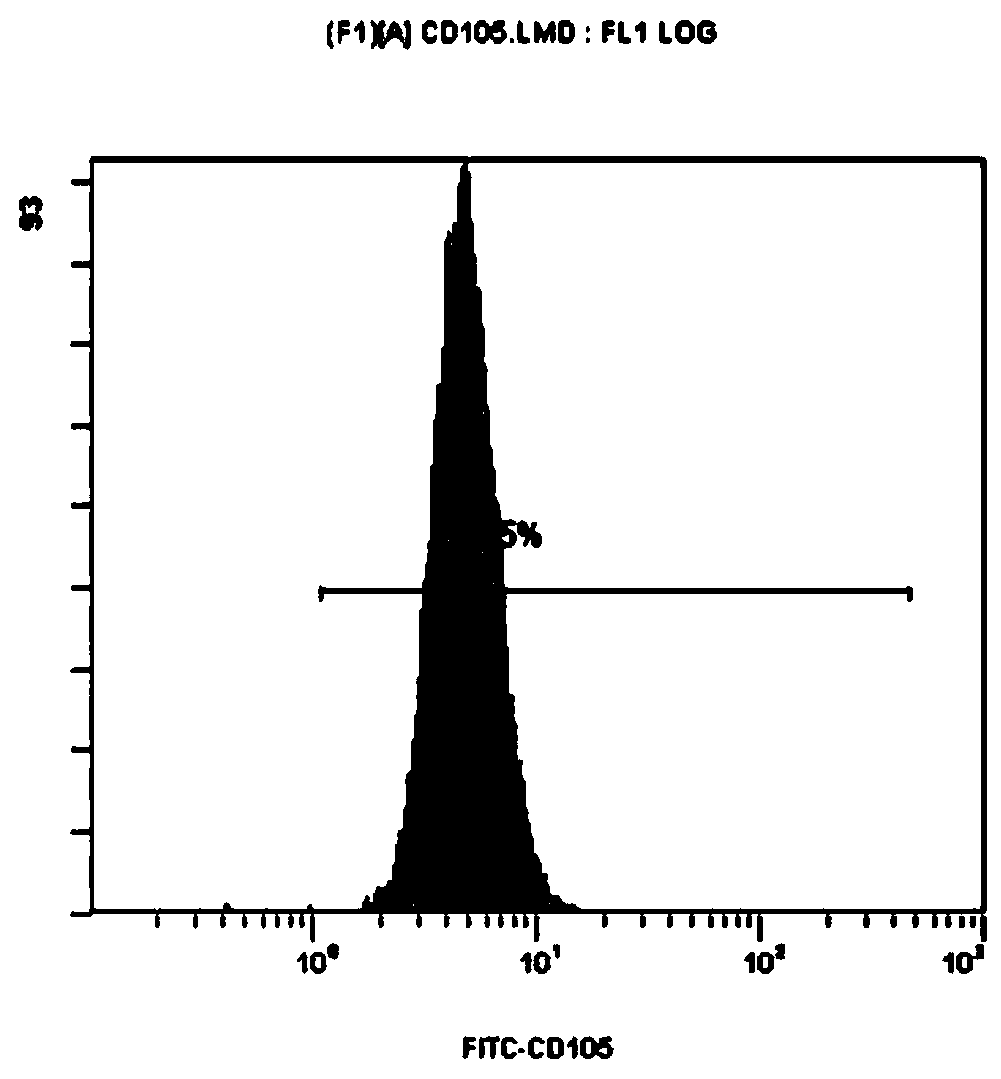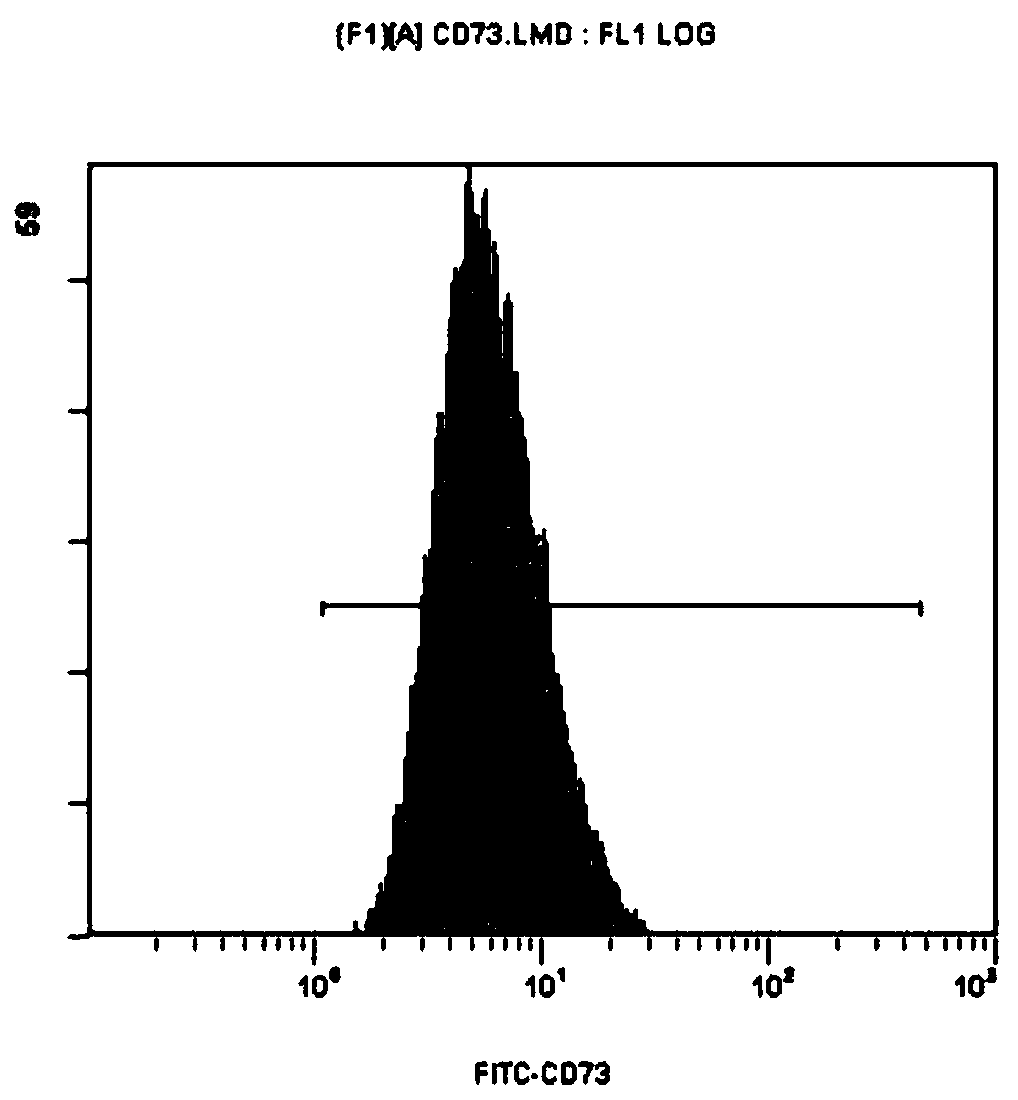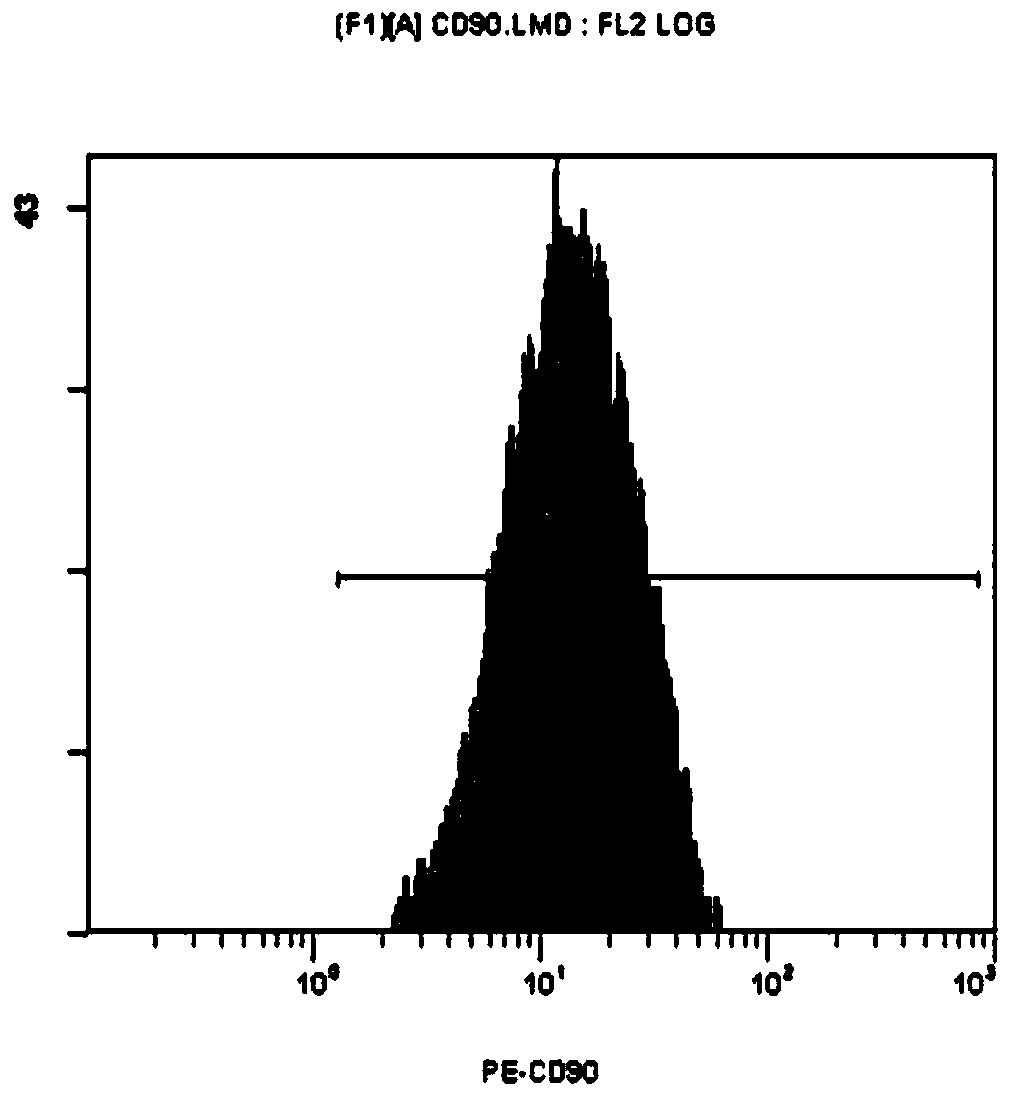Method for inducing human umbilical cord derived mesenchymal stem cells to differentiate into chondrocytes and application thereof
A technology of mesenchymal stem cells and chondrocytes, applied in the field of biomedicine, can solve the problems that affect the clinical application of adipose MSCs, the quality of cells is affected by the donor, and the limited proliferation ability, so as to improve the potential of multidirectional differentiation, promote the ability of mineralization and differentiation, The effect of promoting stem cell differentiation
- Summary
- Abstract
- Description
- Claims
- Application Information
AI Technical Summary
Problems solved by technology
Method used
Image
Examples
Embodiment 1
[0052] S1. Resuscitating UC-MSCs cells: take the UC-MSCs to be tested, quickly recover at 37°C, and resuspend in complete medium;
[0053] Preparation of cell microspheres: collect recovered UC-MSCs and dilute 1×10 7 Cells / mL were resuspended in complete medium, and the cell suspension was added dropwise to the bottom of a 6-well cell culture plate (15L / drop, 5-7 drops / well), and transferred to a cell culture incubator with 5% CO 2 , Culture at 37°C for 2 hours, then add 2 mL of complete medium to each well, continue culturing overnight until the cell droplets shrink to form cell microspheres, and observe under a microscope during the culture process (such as Figure 11 , 12 shown);
[0054] S2. The medium for culturing the cell microspheres is replaced with a chondrogenic differentiation medium, the medium is replaced every 3 days, and the culture is sufficient for 14-28 days.
Embodiment 2
[0055] Embodiment two is comparative example
[0056] The difference from Example 1 is:
[0057] Observing the structure under a microscope during the cultivation process in step S1 is as follows: Figures 13 to 17 shown;
[0058] In S2, after the cell microspheres are formed, the complete medium is continued to be used for culturing, and the medium is replaced every other day for 14-28 days.
[0059] The following setup test detects related product properties etc. in the method of the present invention;
[0060] 1. Identification of UC-MSCs immunolabeling:
[0061] Culture the UC-MSCs obtained in step S1 to collect the 5th passage UC-MSCs. After washing with PBS, prepare 6 × 10 6 cells / mL of cell suspension; press the cell suspension to 100μL / tube (5×10 5 Cells) were aliquoted, and 5 μL of CD105, CD90, CD44, CD73, CD19, CD34, CD45 and HLA-DR monoclonal antibodies labeled with different fluoresceins were added, mixed slightly by shaking, and incubated at room temperature ...
PUM
 Login to View More
Login to View More Abstract
Description
Claims
Application Information
 Login to View More
Login to View More - R&D
- Intellectual Property
- Life Sciences
- Materials
- Tech Scout
- Unparalleled Data Quality
- Higher Quality Content
- 60% Fewer Hallucinations
Browse by: Latest US Patents, China's latest patents, Technical Efficacy Thesaurus, Application Domain, Technology Topic, Popular Technical Reports.
© 2025 PatSnap. All rights reserved.Legal|Privacy policy|Modern Slavery Act Transparency Statement|Sitemap|About US| Contact US: help@patsnap.com



